As Above, So Below
This article was previously published in the North American Journal of Oriental Medicine (NAJOM). They are reprinted here with the kind permission of NAJOM.
One of my favorite thinkers in Chinese medicine, Heiner Fruehauf, Ph.D., often renders the Hermetic adage in this article title as: As in the macrocosm, so in the microcosm. He goes on to make the point that in all traditional systems of medicine, whether Tibetan, Egyptian, Arabic, Chinese, Greek, or others, we are dealing always with pattern recognition. This is a significant difference from our normal way of thinking in our modern world.
An example of NOT thinking this way in Chinese medicine might, for example, go like this: Your Liver Qi Constraint has caused your Spleen to function in a less than ideal manner, which has caused Dampness to accumulate, which has caused… A causal chain like that is common in the TCM way of working—and to be fair to the TCM method, many patients are helped with this approach—but this is not really pattern-recognition-thinking. In this article I’d like to share some thoughts and experiences that might contribute to our understanding of this question.
My previous career was teaching mathematics and German at the high school level. One of my math professors at the University of Oregon had a son who was one of the early pioneer-mathematicians to focus on fractal geometry, a field largely made known by Benoit Mandelbrot. In fractal geometry there is the unique perspective of self-similarity of form and pattern at different levels of scale. The example often cited is of a coastline, the Oregon coast for example. As you zoom in to the coast from out in space down to the micro-levels you would discover at every level of scale a roughly similar set of shapes. As a result of Mandelbrot’s work, features in nature that had been thought rough and chaotic (e.g., clouds, patterns of plant growth) now were recognized as having a degree of order. There was, in other words, a simple rule under things that were visually complex. The macro-scale and micro-scale of a given system are roughly similar.
We see this idea of the whole being embedded in the part in holograms. If I have a normal photo, say of a dog, and I cut it into four pieces, I have no chance whatsoever of recreating the whole original dog image from just one of the pieces. If the image however were a hologram, then I would from just one of those pieces be able to reconstruct the whole (with the help of the laser array that created the image)—the larger the fragment I have, the clearer the image of the whole will be. This is a radical shift and should properly have a major impact on how we view the world around us (including our patients).
This self-similarity at different levels of scale seems to be related to the idea of acupuncture microsystems. How is it, I have often wondered, that a microsystem can work so well, and how is it that there are so many different microsystems? There are the famous ear, abdomen, and scalp systems; we have also systems in the hand, gastrocnemius muscle, manubrium, face, foot, and likely many others. This Mandelbrot idea of self-similarity at different levels of scale in nature seems to hold some of the answer for the magic of how microsystems work. Why is it a surprise that I can treat everything from the hand or ear or scalp? This is the way of nature it seems, at least as we see the implications of fractal geometry and work with holograms.
In the Manaka-Birch-Itaya book, Chasing the Dragon’s Tail, a system of triangulating is shared. In this idea a bias agent (press tack, hinaishin, magnet…) is put on the area of complaint, maybe on a tender point in the shoulder region in the case of a complaint of shoulder pain, and also on the Korean hand point for the shoulder and on the ear shoulder point. These three points fairly quickly arrived at are treated at the end of session as a way of extending the effectiveness of the treatment. It is a clever idea that I have employed, and it makes brilliant use of two of the common microsystems, ear and hand.
In my master’s degree program, I studied the Jiao and Zhu scalp systems. I later flew to Boston to study with Dr. Yamamoto when he presented at Harvard University. In my doctoral studies I had a weekend module with Dr. Zhu Ming Qing, and I was so impressed that a few years later I traveled to San Jose regularly for a year to study with him. When Dr. Zhu came to teach the OCOM doctoral program, he treated a patient in the clinic theater portion of the weekend who had had a devastating stroke three years before. He now lived in a care facility. This patient had little language ability, had not straightened his leg in three years and consequently could not walk, and clearly had considerable mental confusion. With just 8 needles in the scalp and 45 minutes Dr. Zhu had the man walk 20 meters, and for the first time in three years he was able to look at his wife and say clearly, “I love you.” He even told an old joke! There was not a dry eye in the room. My classmates and I were astonished. All that in 45 minutes.
Here is the fascinating aspect of this story to me: When I later went to San Jose to study with Dr. Zhu and reminded him of this case, he did not remember it. This kind of result is an almost everyday experience in his clinic. I am not a stroke rehab specialist, but when called upon to treat stroke patients, I have been able to use his system with remarkable effectiveness. Even I, a neophyte in this Zhu system, was able to get someone walking after three years, to get someone feeding herself after three years. Such is the power of a microsystem. And what really drew me to Dr. Zhu is that he insists that the scalp needling be comfortable for the patient. A needle that hurts is removed. I recognized how easily I would be able to combine my Japanese Meridian Therapy sensitivities with his work. I will add as well that his system is by far the simplest conceptually of the three I studied. That is a real plus to my aging brain.
I had a student intern on my shift at NUNM a few years ago. He had studied extensively with a Chinese auricular specialist outside of school and had become a dedicated student of hers. I saw him time and again make reasonably precise biomedical diagnoses from close palpation of the ear. And his treatments were very effective; his patients were extremely impressed and loyal to him. He really showed me the power of the auricular microsystem. As an aside I will mention that this is one reason I stay with my teaching career—I am always learning things from my students.
A new microsystem was developed in Nanjing at the TCM College there. It is called the turtle abdomen. One of my colleagues studied this system, and I have seen him use it with great effectiveness. He said that at the hospital there they now use this abdominal scheme with stroke patients instead of the typical scalp work done throughout China. In this system the body of a turtle is superimposed on the abdomen; where the turtle’s neck is locates where one treats neck pain (Ren 12 through 10) for instance. The needling here, as in the Zhu system, is very comfortable. For Chinese sensibilities it is extraordinarily superficial needling, and because of that I think this system has the potential to go somewhere with Japanese practitioners.
My doctoral capstone treated the question of “Wholeness in Traditional East Asian Medicine.” In the capstone I discuss the implications of the invention-discovery of holograms, and the idea that the whole is embodied in the part. This is not the way we are taught to think about nature in the West. Here we think that part + part + part + part = the whole, e.g., tree + tree + tree = the forest. It is a summative path to the whole, we might say. But this is what the late Henri Bortoft, Ph.D. calls the “counterfeit whole”. In our field it would look like this: I ask my patient questions about her body, her emotions, her mental state, her spirit, and then I add all that information together and arrive at a whole. It does not work that way with the genuine whole. I read an article about a Zen roshi some years ago, and he claimed that if he observed how someone affixed a stamp to an envelope, he could tell a lot about that person. He said also he just needed to hear how someone answered the phone and he had all the information he required to understand them. This is using a part to get a clear sense of the whole.
So we assess the abdomen, we assess the ear, we assess the scalp, we assess the hand, we note color, sound of voice, odor of the body, we feel the pulse, the forearm, the back shu points, NOT looking to add all of this information together in an equation, hopefully thus to arrive at a whole patient view. Instead we are inspecting various places where we have been taught that the whole might stand forth for us to recognize; when we inspect a PART it is the WHOLE we are after, not just the part. That is the magic of this holographic medicine we practice.
In this rambling article (sorry about that) I have shared some philosophical thoughts and a few experiences on this theme of the holographic body. I hope I have inspired some thoughts and encouraged readers to explore more in this area of microsystem acupuncture. My best wishes to all.
Courses By This Teacher
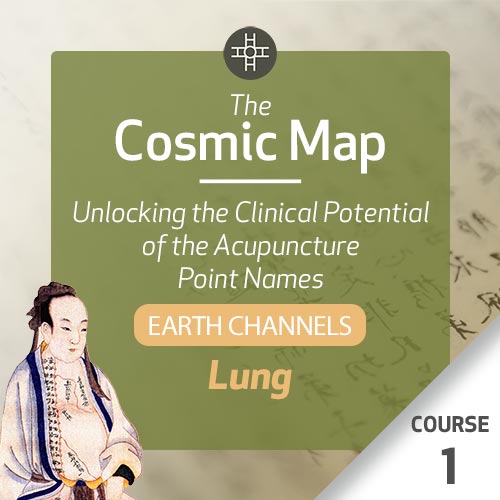
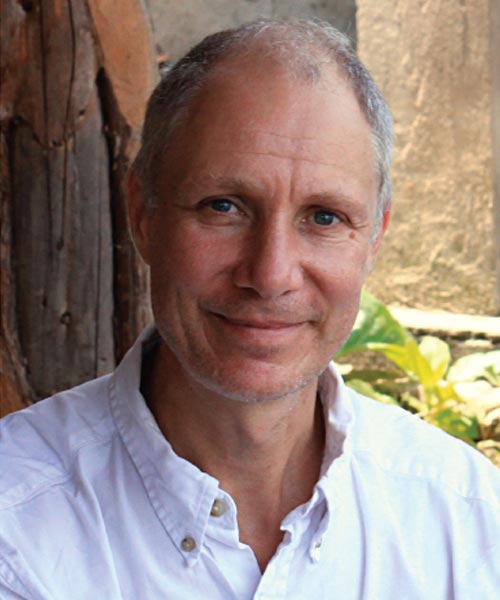
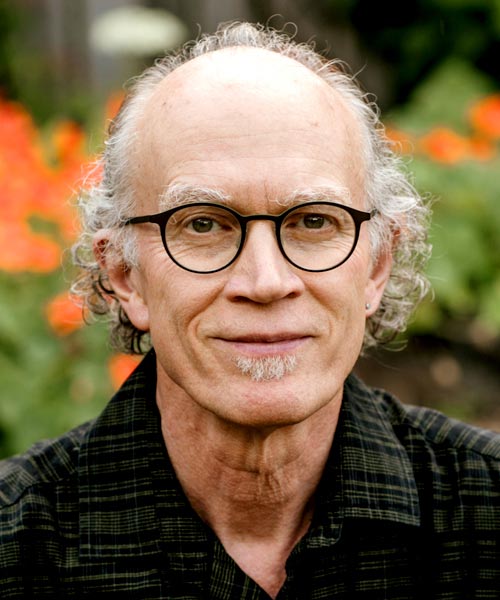
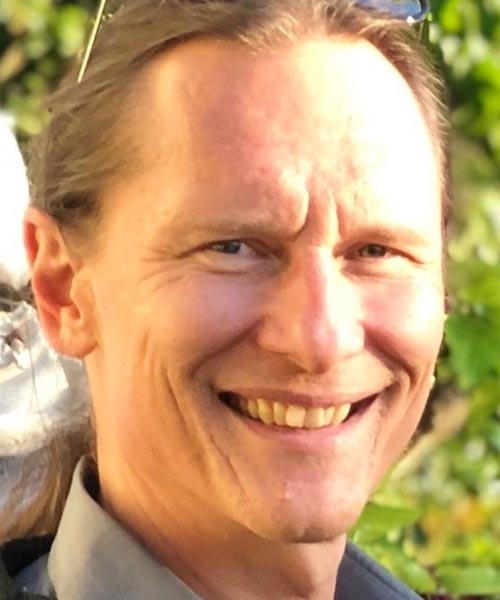
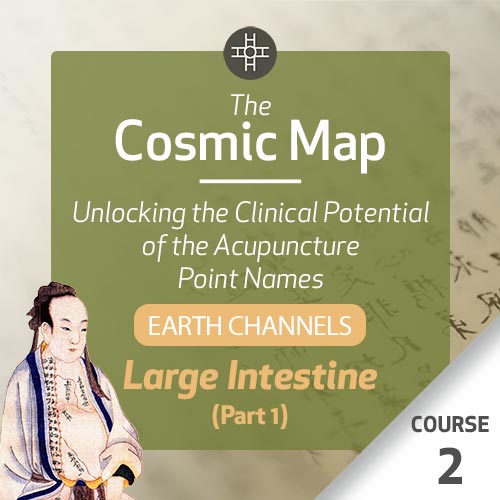



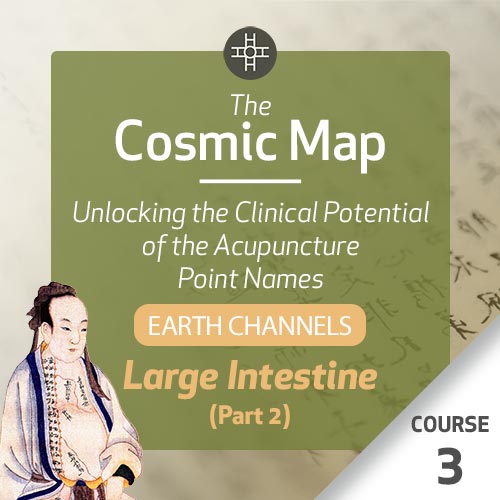



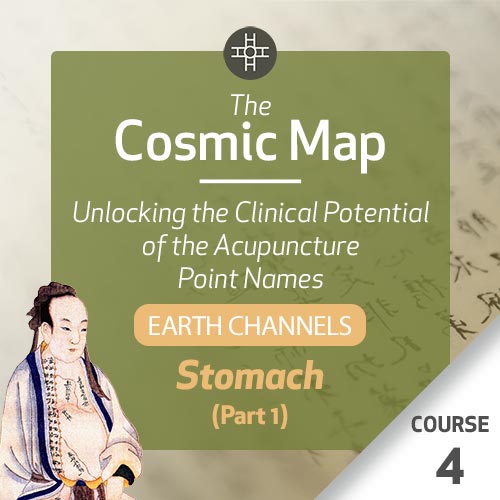



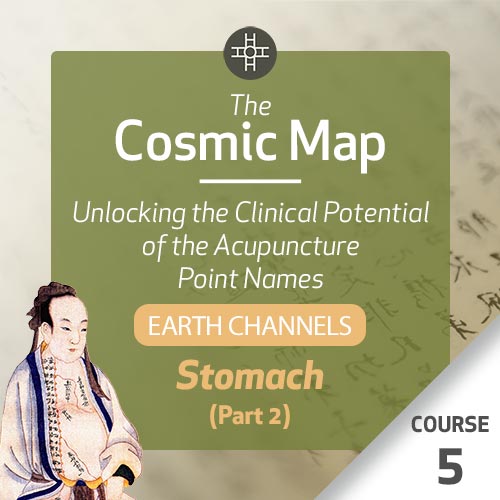



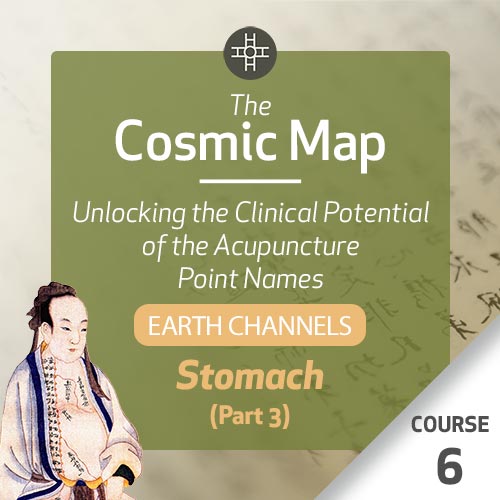



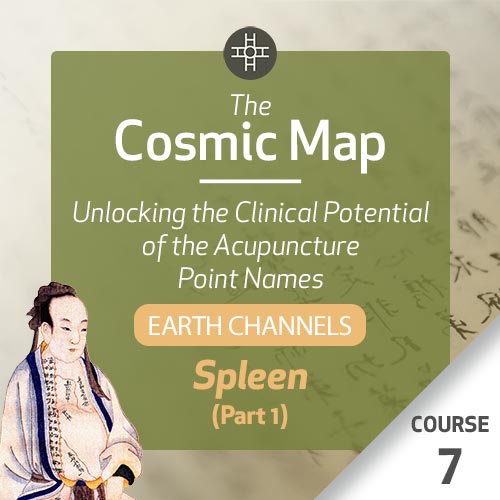



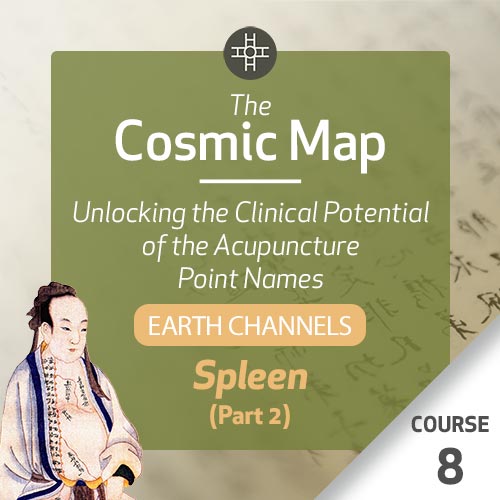



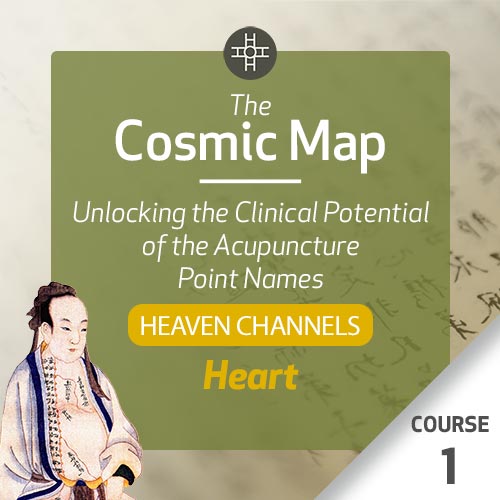



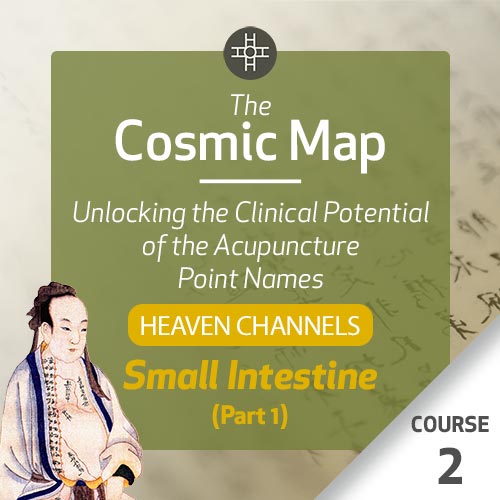



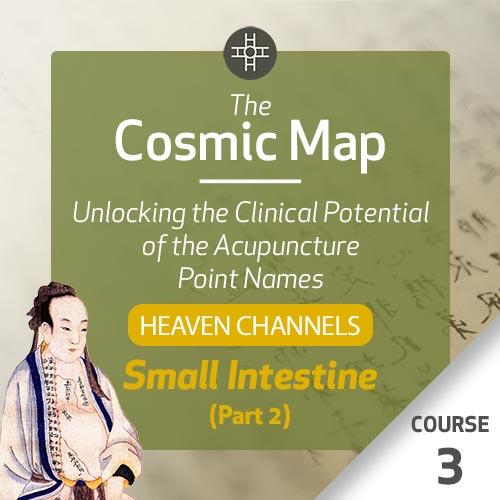



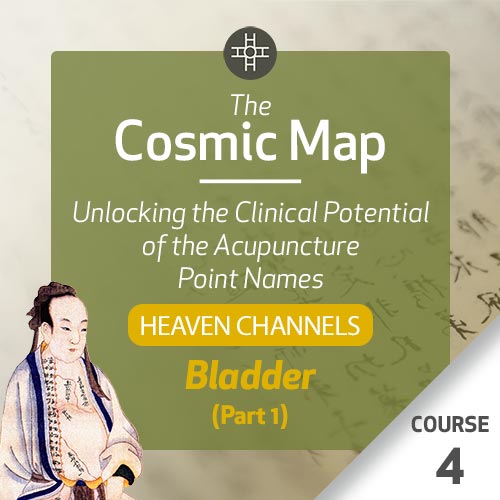



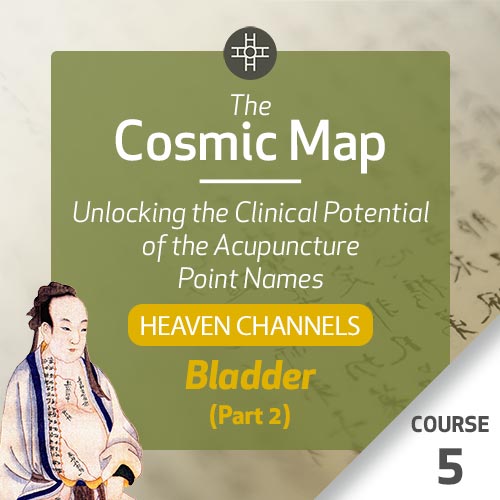



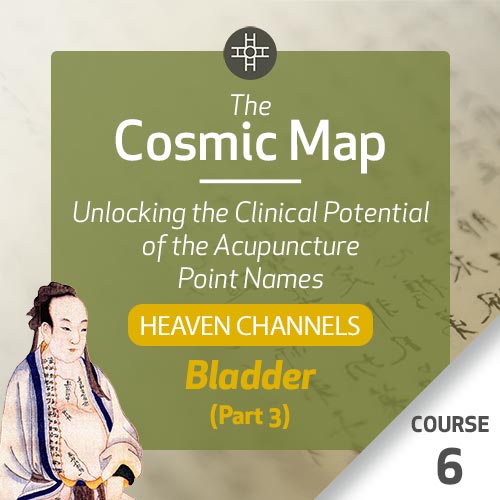



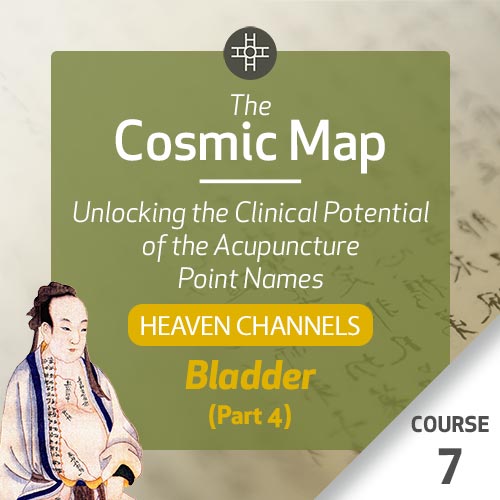



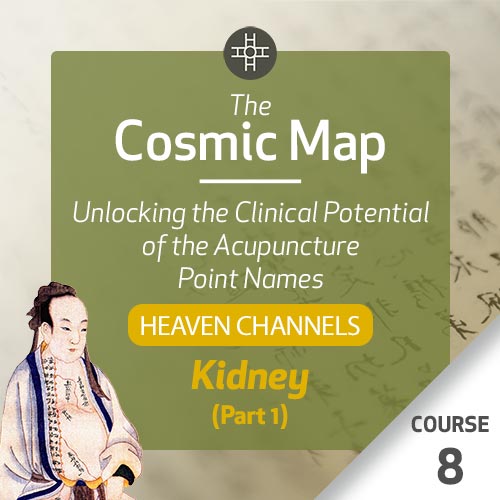



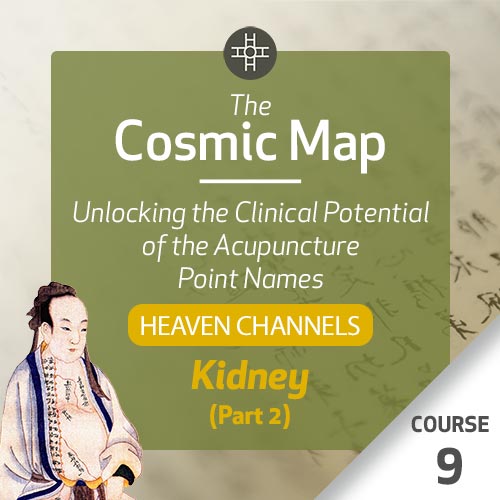



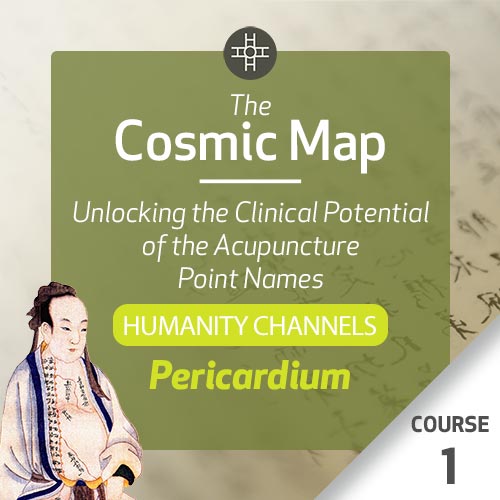







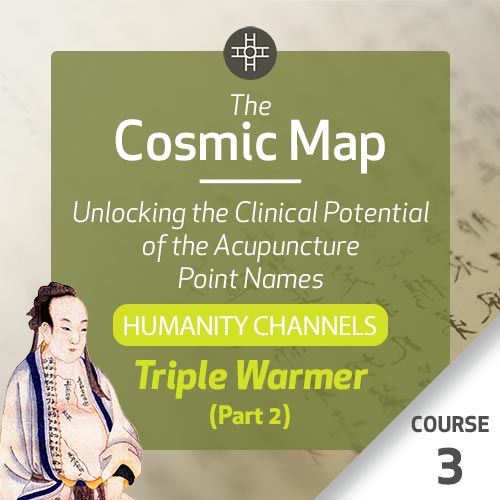



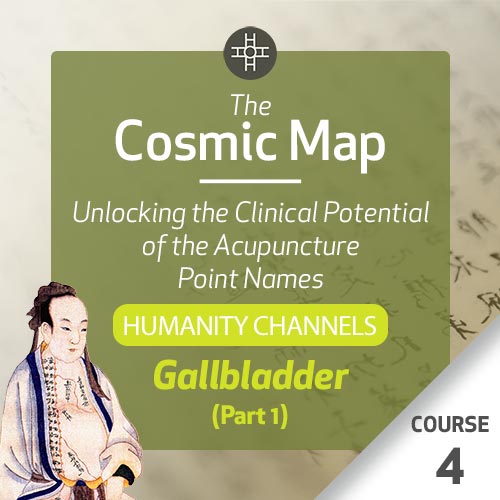



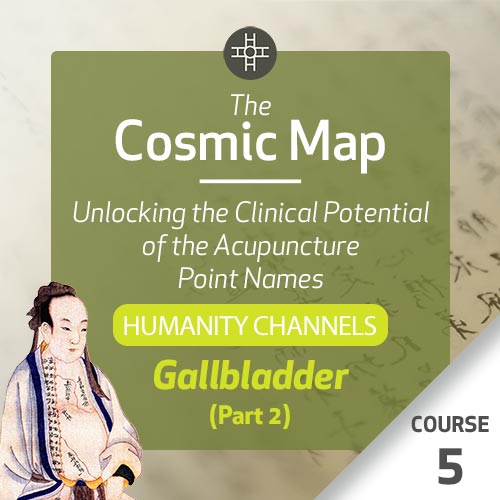







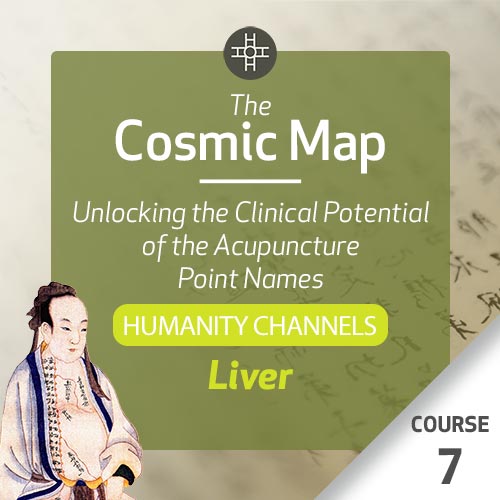



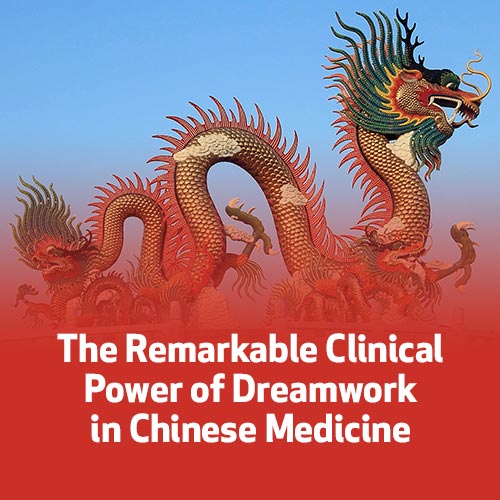
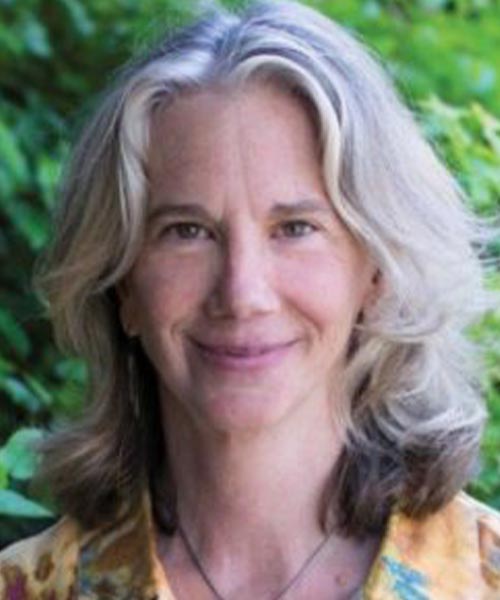



The Cosmic Map: Unlocking the Clinical Potential of the Acupuncture Point Names, Part 1: Earth Channels - Course 1
Lung
with Bob Quinn
See In StoreOverview
This course is designed to further the lifelong learner’s journey as they deepen their mastery of acupuncture point selections based on the profound information embedded in their classical names. Seasoned practitioners, students, and laypeople will all find value in this course.
Heiner Fruehauf will analyze the original meaning of each point name on the Lung channel in its multilayered complexity. The ancient acupuncture point names not only serve as mnemonic reminders about the location of each point, but also contain significant information revealing the unique energetic qualities and highly specific physiology and pathology of each point.
Heiner will tease out each layer of meaning through multiple translations. Relevant clinical context will be provided by the presentation of case examples or experience-based comments by senior acupuncturists Bob Quinn and Michael Berletich.
Heiner will share decades of research into the nuanced qualities of the acupuncture points, and instill in participants a tangible feel for their unique nature and energetic qualities.
With this base of knowledge, participants can stand on firm ground while being flexible in their ability to more deeply understand and select acupuncture points that can effectively treat the complex physical, mental/emotional and spiritual issues we encounter in our out-of-balance world.
Learning Objectives
- Elucidate the symbolism and story of the ancient acupuncture point names that serve as mnemonic reminders about their location, contain significant information, and reveal their unique energetic qualities and highly specific physiology and pathology.
- Describe the symbolic nature of the Lung channel and analyze the original meaning of the organ, meridian and point names in all their multilayered complexity including the cosmologic, energetic and physical viewpoints.
- Present the points of the Lung meridian so participants can understand how to hone their ability to select the most suitable points to effectively treat complex physical, mental/emotional and spiritual issues we encounter in our out-of-balance world.
- Discuss the physiologic actions, pathologic presentations and clinical applications of the Lung point represented by their name translations and their classical text indications with clinical and case examples.
Your Teachers

Heiner Fruehauf
Heiner Fruehauf is the Founding Professor of the College of Classical Chinese Medicine at National University of Natural Medicine (NUNM) in Portland, Oregon. As a practitioner, Dr. Fruehauf focuses on the complementary treatment of difficult and recalcitrant diseases, including cancer, chronic respiratory and digestive disorders, and inflammation of the nervous system.

Bob Quinn
Bob Quinn, DAOM, L.Ac. has been a full-time Associate Professor of Chinese Medicine at National University of Natural Medicine in Portland since 2009; before that, he taught and supervised at the Oregon College of Oriental Medicine. He first entered acupuncture practice in 1998 with a master’s degree from OCOM, and later returned to earn his doctoral degree in Chinese medicine in 2008.

Michael Berletich
Dr. Michael Berletich has been teaching for over 30 years. He received his Masters in Chinese Medicine (2005) and his clinical Doctorate in Chinese medicine (2016) from OCOM. He's worked the past 23 years as Professor, Clinician, Department Chair and Dean. He also maintains a busy private practice.
Categories
Tags
The Cosmic Map: Unlocking the Clinical Potential of the Acupuncture Point Names, Part 1: Earth Channels - Course 2
Large Intestine Part 1
with Bob Quinn
See In StoreOverview
This course is designed to further the lifelong learners’ journey as they deepen their mastery of acupuncture point selections based on the profound information embedded in their classical names. Seasoned practitioners, students, and laypeople will all find value in this course.
Heiner Fruehauf will analyze the original meaning of each point name on the Large Intestine channel in its multilayered complexity. The ancient acupuncture point names not only serve as mnemonic reminders about the location of each point, but also contain significant information revealing the unique energetic qualities and highly specific physiology and pathology of each point.
Heiner will tease out each layer of meaning through multiple translations. Relevant clinical context will be provided by the presentation of case examples or experience-based comments by senior acupuncturists Bob Quinn and Michael Berletich.
Heiner will share decades of research into the nuanced qualities of the acupuncture points, and instill in participants a tangible feel for their unique nature and energetic qualities.
With this base of knowledge, participants can stand on firm ground while being flexible in their ability to more deeply understand and select acupuncture points that can effectively treat the complex physical, mental/emotional and spiritual issues we encounter in our out-of-balance world.
Learning Objectives
- Present Large Intestine points so participants can understand how to hone their ability to select the most suitable points to effectively treat complex physical, mental/emotional and spiritual issues we encounter in our out-of-balance world.
- Discuss the physiologic actions, pathologic presentations and clinical applications of the Large Intestine point represented by their name translations and their classical text indications with clinical and case examples
- Elucidate the symbolism and story of the ancient acupuncture point names that serve as mnemonic reminders about their location, contain significant information, and reveal their unique energetic qualities and highly specific physiology and pathology
- Describe the symbolic nature of the Large Intestine channel and analyze the original meaning of the organ, meridian and point names in all their multilayered complexity including the cosmologic, energetic and physical viewpoints
Your Teachers

Bob Quinn
Bob Quinn, DAOM, L.Ac. has been a full-time Associate Professor of Chinese Medicine at National University of Natural Medicine in Portland since 2009; before that, he taught and supervised at the Oregon College of Oriental Medicine. He first entered acupuncture practice in 1998 with a master’s degree from OCOM, and later returned to earn his doctoral degree in Chinese medicine in 2008.

Heiner Fruehauf
Heiner Fruehauf is the Founding Professor of the College of Classical Chinese Medicine at National University of Natural Medicine (NUNM) in Portland, Oregon. As a practitioner, Dr. Fruehauf focuses on the complementary treatment of difficult and recalcitrant diseases, including cancer, chronic respiratory and digestive disorders, and inflammation of the nervous system.

Michael Berletich
Dr. Michael Berletich has been teaching for over 30 years. He received his Masters in Chinese Medicine (2005) and his clinical Doctorate in Chinese medicine (2016) from OCOM. He's worked the past 23 years as Professor, Clinician, Department Chair and Dean. He also maintains a busy private practice.
Categories
Tags
The Cosmic Map: Unlocking the Clinical Potential of the Acupuncture Point Names, Part 1: Earth Channels - Course 3
Large Intestine Part 2
with Bob Quinn
See In StoreOverview
This course is designed to further the lifelong learners’ journey as they deepen their mastery of acupuncture point selections based on the profound information embedded in their classical names. Seasoned practitioners, students, and laypeople will all find value in this course.
Heiner Fruehauf will analyze the original meaning of each point name on the Large Intestine channel in its multilayered complexity. The ancient acupuncture point names not only serve as mnemonic reminders about the location of each point, but also contain significant information revealing the unique energetic qualities and highly specific physiology and pathology of each point.
Heiner will tease out each layer of meaning through multiple translations. Relevant clinical context will be provided by the presentation of case examples or experience-based comments by senior acupuncturists Bob Quinn and Michael Berletich.
Heiner will share decades of research into the nuanced qualities of the acupuncture points, and instill in participants a tangible feel for their unique nature and energetic qualities.
With this base of knowledge, participants can stand on firm ground while being flexible in their ability to more deeply understand and select acupuncture points that can effectively treat the complex physical, mental/emotional and spiritual issues we encounter in our out-of-balance world.
Learning Objectives
- Discuss the physiologic actions, pathologic presentations and clinical applications of the Large Intestine point represented by their name translations and their classical text indications with clinical and case examples
- Present Large Intestine points so participants can understand how to hone their ability to select the most suitable points to effectively treat complex physical, mental/emotional and spiritual issues we encounter in our out-of-balance world.
- Elucidate the symbolism and story of the ancient acupuncture point names that serve as mnemonic reminders about their location, contain significant information, and reveal their unique energetic qualities and highly specific physiology and pathology
- Describe the symbolic nature of the Large Intestine channel and analyze the original meaning of the organ, meridian and point names in all their multilayered complexity including the cosmologic, energetic and physical viewpoints
Your Teachers

Michael Berletich
Dr. Michael Berletich has been teaching for over 30 years. He received his Masters in Chinese Medicine (2005) and his clinical Doctorate in Chinese medicine (2016) from OCOM. He's worked the past 23 years as Professor, Clinician, Department Chair and Dean. He also maintains a busy private practice.

Bob Quinn
Bob Quinn, DAOM, L.Ac. has been a full-time Associate Professor of Chinese Medicine at National University of Natural Medicine in Portland since 2009; before that, he taught and supervised at the Oregon College of Oriental Medicine. He first entered acupuncture practice in 1998 with a master’s degree from OCOM, and later returned to earn his doctoral degree in Chinese medicine in 2008.

Heiner Fruehauf
Heiner Fruehauf is the Founding Professor of the College of Classical Chinese Medicine at National University of Natural Medicine (NUNM) in Portland, Oregon. As a practitioner, Dr. Fruehauf focuses on the complementary treatment of difficult and recalcitrant diseases, including cancer, chronic respiratory and digestive disorders, and inflammation of the nervous system.
Categories
Tags
The Cosmic Map: Unlocking the Clinical Potential of the Acupuncture Point Names, Part 1: Earth Channels - Course 4
Stomach Part 1
with Bob Quinn
See In StoreOverview
This course is designed to further the lifelong learner’s journey as they deepen their mastery of acupuncture point selections based on the profound information embedded in their classical names. Seasoned practitioners, students, and laypeople will all find value in this course.
Heiner Fruehauf will analyze the original meaning of each point name on the Stomach channel in its multilayered complexity. The ancient acupuncture point names not only serve as mnemonic reminders about the location of each point, but also contain significant information revealing the unique energetic qualities and highly specific physiology and pathology of each point.
Heiner will tease out each layer of meaning through multiple translations. Relevant clinical context will be provided by the presentation of case examples or experience-based comments by senior acupuncturists Bob Quinn and Michael Berletich.
Heiner will share decades of research into the nuanced qualities of the acupuncture points, and instill in participants a tangible feel for their unique nature and energetic qualities.
With this base of knowledge, participants can stand on firm ground while being flexible in their ability to more deeply understand and select acupuncture points that can effectively treat the complex physical, mental/emotional and spiritual issues we encounter in our out-of-balance world.
Learning Objectives
- Present Stomach points so participants can understand how to hone their ability to select the most suitable points to effectively treat complex physical, mental/emotional and spiritual issues we encounter in our out-of-balance world.
- Discuss the physiologic actions, pathologic presentations and clinical applications of the Stomach points represented by their name translations and their classical text indications with clinical and case examples
- Describe the symbolic nature of the Stomach channel and analyze the original meaning of the organ, meridian and point names in all their multilayered complexity including the cosmologic, energetic and physical viewpoints
- Elucidate the symbolism and story of the ancient acupuncture point names that serve as mnemonic reminders about their location, contain significant information, and reveal their unique energetic qualities and highly specific physiology and pathology
Your Teachers

Michael Berletich
Dr. Michael Berletich has been teaching for over 30 years. He received his Masters in Chinese Medicine (2005) and his clinical Doctorate in Chinese medicine (2016) from OCOM. He's worked the past 23 years as Professor, Clinician, Department Chair and Dean. He also maintains a busy private practice.

Heiner Fruehauf
Heiner Fruehauf is the Founding Professor of the College of Classical Chinese Medicine at National University of Natural Medicine (NUNM) in Portland, Oregon. As a practitioner, Dr. Fruehauf focuses on the complementary treatment of difficult and recalcitrant diseases, including cancer, chronic respiratory and digestive disorders, and inflammation of the nervous system.

Bob Quinn
Bob Quinn, DAOM, L.Ac. has been a full-time Associate Professor of Chinese Medicine at National University of Natural Medicine in Portland since 2009; before that, he taught and supervised at the Oregon College of Oriental Medicine. He first entered acupuncture practice in 1998 with a master’s degree from OCOM, and later returned to earn his doctoral degree in Chinese medicine in 2008.
Categories
Tags
The Cosmic Map: Unlocking the Clinical Potential of the Acupuncture Point Names, Part 1: Earth Channels - Course 5
Stomach Part 2
with Bob Quinn
See In StoreOverview
This course is designed to further the lifelong learner’s journey as they deepen their mastery of acupuncture point selections based on the profound information embedded in their classical names. Seasoned practitioners, students, and laypeople will all find value in this course.
Heiner Fruehauf will analyze the original meaning of each point name on the Stomach channel in its multilayered complexity. The ancient acupuncture point names not only serve as mnemonic reminders about the location of each point, but also contain significant information revealing the unique energetic qualities and highly specific physiology and pathology of each point.
Heiner will tease out each layer of meaning through multiple translations. Relevant clinical context will be provided by the presentation of case examples or experience-based comments by senior acupuncturists Bob Quinn and Michael Berletich.
Heiner will share decades of research into the nuanced qualities of the acupuncture points, and instill in participants a tangible feel for their unique nature and energetic qualities.
With this base of knowledge, participants can stand on firm ground while being flexible in their ability to more deeply understand and select acupuncture points that can effectively treat the complex physical, mental/emotional and spiritual issues we encounter in our out-of-balance world.
Learning Objectives
- Present Stomach points so participants can understand how to hone their ability to select the most suitable points to effectively treat complex physical, mental/emotional and spiritual issues we encounter in our out-of-balance world.
- Elucidate the symbolism and story of the ancient acupuncture point names that serve as mnemonic reminders about their location, contain significant information, and reveal their unique energetic qualities and highly specific physiology and pathology.
- Discuss the physiologic actions, pathologic presentations and clinical applications of the Stomach points represented by their name translations and their classical text indications with clinical and case examples.
- Describe the symbolic nature of the Stomach channel and analyze the original meaning of the organ, meridian and point names in all their multilayered complexity including the cosmologic, energetic and physical viewpoints.
Your Teachers

Bob Quinn
Bob Quinn, DAOM, L.Ac. has been a full-time Associate Professor of Chinese Medicine at National University of Natural Medicine in Portland since 2009; before that, he taught and supervised at the Oregon College of Oriental Medicine. He first entered acupuncture practice in 1998 with a master’s degree from OCOM, and later returned to earn his doctoral degree in Chinese medicine in 2008.

Michael Berletich
Dr. Michael Berletich has been teaching for over 30 years. He received his Masters in Chinese Medicine (2005) and his clinical Doctorate in Chinese medicine (2016) from OCOM. He's worked the past 23 years as Professor, Clinician, Department Chair and Dean. He also maintains a busy private practice.

Heiner Fruehauf
Heiner Fruehauf is the Founding Professor of the College of Classical Chinese Medicine at National University of Natural Medicine (NUNM) in Portland, Oregon. As a practitioner, Dr. Fruehauf focuses on the complementary treatment of difficult and recalcitrant diseases, including cancer, chronic respiratory and digestive disorders, and inflammation of the nervous system.
Categories
Tags
The Cosmic Map: Unlocking the Clinical Potential of the Acupuncture Point Names, Part 1: Earth Channels - Course 6
Stomach Part 3
with Bob Quinn
See In StoreOverview
This course is designed to further the lifelong learner’s journey as they deepen their mastery of acupuncture point selections based on the profound information embedded in their classical names. Seasoned practitioners, students, and laypeople will all find value in this course.
Heiner Fruehauf will analyze the original meaning of each point name on the Stomach channel in its multilayered complexity. The ancient acupuncture point names not only serve as mnemonic reminders about the location of each point, but also contain significant information revealing the unique energetic qualities and highly specific physiology and pathology of each point.
Learning Objectives
- Present Stomach points so participants can understand how to hone their ability to select the most suitable points to effectively treat complex physical, mental/emotional and spiritual issues we encounter in our out-of-balance world.
- Elucidate the symbolism and story of the ancient acupuncture point names that serve as mnemonic reminders about their location, contain significant information, and reveal their unique energetic qualities and highly specific physiology and pathology.
- Discuss the physiologic actions, pathologic presentations and clinical applications of the Stomach points represented by their name translations and their classical text indications with clinical and case examples.
- Describe the symbolic nature of the Stomach channel and analyze the original meaning of the organ, meridian and point names in all their multilayered complexity including the cosmologic, energetic and physical viewpoints.
Your Teachers

Bob Quinn
Bob Quinn, DAOM, L.Ac. has been a full-time Associate Professor of Chinese Medicine at National University of Natural Medicine in Portland since 2009; before that, he taught and supervised at the Oregon College of Oriental Medicine. He first entered acupuncture practice in 1998 with a master’s degree from OCOM, and later returned to earn his doctoral degree in Chinese medicine in 2008.

Michael Berletich
Dr. Michael Berletich has been teaching for over 30 years. He received his Masters in Chinese Medicine (2005) and his clinical Doctorate in Chinese medicine (2016) from OCOM. He's worked the past 23 years as Professor, Clinician, Department Chair and Dean. He also maintains a busy private practice.

Heiner Fruehauf
Heiner Fruehauf is the Founding Professor of the College of Classical Chinese Medicine at National University of Natural Medicine (NUNM) in Portland, Oregon. As a practitioner, Dr. Fruehauf focuses on the complementary treatment of difficult and recalcitrant diseases, including cancer, chronic respiratory and digestive disorders, and inflammation of the nervous system.
Categories
Tags
The Cosmic Map: Unlocking the Clinical Potential of the Acupuncture Point Names, Part 1: Earth Channels - Course 7
Spleen Part 1
with Bob Quinn
See In StoreOverview
This course is designed to further the lifelong learner’s journey as they deepen their mastery of acupuncture point selections based on the profound information embedded in their classical names. Seasoned practitioners, students, and laypeople will all find value in this course.
Heiner Fruehauf will analyze the original meaning of each point name on the Spleen channel in its multilayered complexity. The ancient acupuncture point names not only serve as mnemonic reminders about the location of each point, but also contain significant information revealing the unique energetic qualities and highly specific physiology and pathology of each point.
Learning Objectives
- Elucidate the symbolism and story of the ancient acupuncture point names that serve as mnemonic reminders about their location, contain significant information, and reveal their unique energetic qualities and highly specific physiology and pathology
- Discuss the physiologic actions, pathologic presentations and clinical applications of the Spleen points represented by their name translations and their classical text indications with clinical and case examples
- Present Spleen points so participants can understand how to hone their ability to select the most suitable points to effectively treat complex physical, mental/emotional and spiritual issues we encounter in our out-of-balance world.
- Describe the symbolic nature of the Spleen channel and analyze the original meaning of the organ, meridian and point names in all their multilayered complexity including the cosmologic, energetic and physical viewpoints
Your Teachers

Bob Quinn
Bob Quinn, DAOM, L.Ac. has been a full-time Associate Professor of Chinese Medicine at National University of Natural Medicine in Portland since 2009; before that, he taught and supervised at the Oregon College of Oriental Medicine. He first entered acupuncture practice in 1998 with a master’s degree from OCOM, and later returned to earn his doctoral degree in Chinese medicine in 2008.

Michael Berletich
Dr. Michael Berletich has been teaching for over 30 years. He received his Masters in Chinese Medicine (2005) and his clinical Doctorate in Chinese medicine (2016) from OCOM. He's worked the past 23 years as Professor, Clinician, Department Chair and Dean. He also maintains a busy private practice.

Heiner Fruehauf
Heiner Fruehauf is the Founding Professor of the College of Classical Chinese Medicine at National University of Natural Medicine (NUNM) in Portland, Oregon. As a practitioner, Dr. Fruehauf focuses on the complementary treatment of difficult and recalcitrant diseases, including cancer, chronic respiratory and digestive disorders, and inflammation of the nervous system.
Categories
Tags
The Cosmic Map: Unlocking the Clinical Potential of the Acupuncture Point Names, Part 1: Earth Channels - Course 8
Spleen Part 2
with Bob Quinn
See In StoreOverview
This course is designed to further the lifelong learner’s journey as they deepen their mastery of acupuncture point selections based on the profound information embedded in their classical names. Seasoned practitioners, students, and laypeople will all find value in this course.
Heiner Fruehauf will analyze the original meaning of each point name on the Spleen channel in its multilayered complexity. The ancient acupuncture point names not only serve as mnemonic reminders about the location of each point, but also contain significant information revealing the unique energetic qualities and highly specific physiology and pathology of each point.
Learning Objectives
- Discuss the physiologic actions, pathologic presentations and clinical applications of the Spleen points represented by their name translations and their classical text indications with clinical and case examples
- Present Spleen points so participants can understand how to hone their ability to select the most suitable points to effectively treat complex physical, mental/emotional and spiritual issues we encounter in our out-of-balance world.
- Describe the symbolic nature of the Spleen channel and analyze the original meaning of the organ, meridian and point names in all their multilayered complexity including the cosmologic, energetic and physical viewpoints
- Elucidate the symbolism and story of the ancient acupuncture point names that serve as mnemonic reminders about their location, contain significant information, and reveal their unique energetic qualities and highly specific physiology and pathology
Your Teachers

Michael Berletich
Dr. Michael Berletich has been teaching for over 30 years. He received his Masters in Chinese Medicine (2005) and his clinical Doctorate in Chinese medicine (2016) from OCOM. He's worked the past 23 years as Professor, Clinician, Department Chair and Dean. He also maintains a busy private practice.

Heiner Fruehauf
Heiner Fruehauf is the Founding Professor of the College of Classical Chinese Medicine at National University of Natural Medicine (NUNM) in Portland, Oregon. As a practitioner, Dr. Fruehauf focuses on the complementary treatment of difficult and recalcitrant diseases, including cancer, chronic respiratory and digestive disorders, and inflammation of the nervous system.

Bob Quinn
Bob Quinn, DAOM, L.Ac. has been a full-time Associate Professor of Chinese Medicine at National University of Natural Medicine in Portland since 2009; before that, he taught and supervised at the Oregon College of Oriental Medicine. He first entered acupuncture practice in 1998 with a master’s degree from OCOM, and later returned to earn his doctoral degree in Chinese medicine in 2008.
Categories
Tags
The Cosmic Map: Unlocking the Clinical Potential of the Acupuncture Point Names, Part 2: Heaven Channels - Course 1
Heart
with Bob Quinn
See In StoreOverview
This course is designed to further the lifelong learner’s journey as they deepen their mastery of acupuncture point selections based on the profound information embedded in their classical names. Seasoned practitioners, students, and laypeople will all find value in this course.
Heiner Fruehauf will analyze the original meaning of each point name on the Heart channel in its multilayered complexity. The ancient acupuncture point names not only serve as mnemonic reminders about the location of each point, but also contain significant information revealing the unique energetic qualities and highly specific physiology and pathology of each point.
Learning Objectives
- Discuss the physiologic actions, pathologic presentations and clinical applications of the Heart points represented by their name translations and their classical text indications with clinical and case examples.
- Elucidate the symbolism and story of the ancient acupuncture point names that serve as mnemonic reminders about their location, contain significant information, and reveal their unique energetic qualities and highly specific physiology and pathology.
- Present Heart points so participants can understand how to hone their ability to select the most suitable points to effectively treat complex physical, mental/emotional and spiritual issues we encounter in our out-of-balance world.
- Describe the symbolic nature of the Heart channel and analyze the original meaning of the organ, meridian and point names in all their multilayered complexity including the cosmologic, energetic and physical viewpoints.
Your Teachers

Michael Berletich
Dr. Michael Berletich has been teaching for over 30 years. He received his Masters in Chinese Medicine (2005) and his clinical Doctorate in Chinese medicine (2016) from OCOM. He's worked the past 23 years as Professor, Clinician, Department Chair and Dean. He also maintains a busy private practice.

Heiner Fruehauf
Heiner Fruehauf is the Founding Professor of the College of Classical Chinese Medicine at National University of Natural Medicine (NUNM) in Portland, Oregon. As a practitioner, Dr. Fruehauf focuses on the complementary treatment of difficult and recalcitrant diseases, including cancer, chronic respiratory and digestive disorders, and inflammation of the nervous system.

Bob Quinn
Bob Quinn, DAOM, L.Ac. has been a full-time Associate Professor of Chinese Medicine at National University of Natural Medicine in Portland since 2009; before that, he taught and supervised at the Oregon College of Oriental Medicine. He first entered acupuncture practice in 1998 with a master’s degree from OCOM, and later returned to earn his doctoral degree in Chinese medicine in 2008.
Categories
Tags
The Cosmic Map: Unlocking the Clinical Potential of the Acupuncture Point Names, Part 2: Heaven Channels - Course 2
Small Intestine Part 1
with Bob Quinn
See In StoreOverview
This course is designed to further the lifelong learner’s journey as they deepen their mastery of acupuncture point selections based on the profound information embedded in their classical names. Seasoned practitioners, students, and laypeople will all find value in this course.
Heiner Fruehauf will analyze the original meaning of each point name on the Heart channel in its multilayered complexity. The ancient acupuncture point names not only serve as mnemonic reminders about the location of each point, but also contain significant information revealing the unique energetic qualities and highly specific physiology and pathology of each point.
Learning Objectives
- Elucidate the symbolism and story of the ancient acupuncture point names that serve as mnemonic reminders about their location, contain significant information, and reveal their unique energetic qualities and highly specific physiology and pathology.
- Discuss the physiologic actions, pathologic presentations and clinical applications of the Small Intestine points represented by their name translations and their classical text indications with clinical and case examples.
- Describe the symbolic nature of the Small Intestine channel and analyze the original meaning of the organ, meridian and point names in all their multilayered complexity including the cosmologic, energetic and physical viewpoints.
- Present Small Intestine points so participants can understand how to hone their ability to select the most suitable points to effectively treat complex physical, mental/emotional and spiritual issues we encounter in our out-of-balance world.
Your Teachers

Bob Quinn
Bob Quinn, DAOM, L.Ac. has been a full-time Associate Professor of Chinese Medicine at National University of Natural Medicine in Portland since 2009; before that, he taught and supervised at the Oregon College of Oriental Medicine. He first entered acupuncture practice in 1998 with a master’s degree from OCOM, and later returned to earn his doctoral degree in Chinese medicine in 2008.

Michael Berletich
Dr. Michael Berletich has been teaching for over 30 years. He received his Masters in Chinese Medicine (2005) and his clinical Doctorate in Chinese medicine (2016) from OCOM. He's worked the past 23 years as Professor, Clinician, Department Chair and Dean. He also maintains a busy private practice.

Heiner Fruehauf
Heiner Fruehauf is the Founding Professor of the College of Classical Chinese Medicine at National University of Natural Medicine (NUNM) in Portland, Oregon. As a practitioner, Dr. Fruehauf focuses on the complementary treatment of difficult and recalcitrant diseases, including cancer, chronic respiratory and digestive disorders, and inflammation of the nervous system.
Categories
Tags
The Cosmic Map: Unlocking the Clinical Potential of the Acupuncture Point Names, Part 2: Heaven Channels - Course 3
Small Intestine Part 2
with Bob Quinn
See In StoreOverview
This course is designed to further the lifelong learner’s journey as they deepen their mastery of acupuncture point selections based on the profound information embedded in their classical names. Seasoned practitioners, students, and laypeople will all find value in this course.
Heiner Fruehauf will analyze the original meaning of each point name on the Heart channel in its multilayered complexity. The ancient acupuncture point names not only serve as mnemonic reminders about the location of each point, but also contain significant information revealing the unique energetic qualities and highly specific physiology and pathology of each point.
Learning Objectives
- Describe the symbolic nature of the Small Intestine channel and analyze the original meaning of the organ, meridian and point names in all their multilayered complexity including the cosmologic, energetic and physical viewpoints.
- Present Small Intestine points so participants can understand how to hone their ability to select the most suitable points to effectively treat complex physical, mental/emotional and spiritual issues we encounter in our out-of-balance world.
- Discuss the physiologic actions, pathologic presentations and clinical applications of the Small Intestine points represented by their name translations and their classical text indications with clinical and case examples.
- Elucidate the symbolism and story of the ancient acupuncture point names that serve as mnemonic reminders about their location, contain significant information, and reveal their unique energetic qualities and highly specific physiology and pathology
Your Teachers

Michael Berletich
Dr. Michael Berletich has been teaching for over 30 years. He received his Masters in Chinese Medicine (2005) and his clinical Doctorate in Chinese medicine (2016) from OCOM. He's worked the past 23 years as Professor, Clinician, Department Chair and Dean. He also maintains a busy private practice.

Heiner Fruehauf
Heiner Fruehauf is the Founding Professor of the College of Classical Chinese Medicine at National University of Natural Medicine (NUNM) in Portland, Oregon. As a practitioner, Dr. Fruehauf focuses on the complementary treatment of difficult and recalcitrant diseases, including cancer, chronic respiratory and digestive disorders, and inflammation of the nervous system.

Bob Quinn
Bob Quinn, DAOM, L.Ac. has been a full-time Associate Professor of Chinese Medicine at National University of Natural Medicine in Portland since 2009; before that, he taught and supervised at the Oregon College of Oriental Medicine. He first entered acupuncture practice in 1998 with a master’s degree from OCOM, and later returned to earn his doctoral degree in Chinese medicine in 2008.
Categories
Tags
The Cosmic Map: Unlocking the Clinical Potential of the Acupuncture Point Names, Part 2: Heaven Channels - Course 4
Bladder Part 1
with Bob Quinn
See In StoreOverview
This course is designed to further the lifelong learner’s journey as they deepen their mastery of acupuncture point selections based on the profound information embedded in their classical names. Seasoned practitioners, students, and laypeople will all find value in this course.
Heiner Fruehauf will analyze the original meaning of each point name on the Bladder channel in its multilayered complexity. The ancient acupuncture point names not only serve as mnemonic reminders about the location of each point, but also contain significant information revealing the unique energetic qualities and highly specific physiology and pathology of each point.
Learning Objectives
- Elucidate the symbolism and story of the ancient acupuncture point names that serve as mnemonic reminders about their location, contain significant information, and reveal their unique energetic qualities and highly specific physiology and pathology.
- Discuss the physiologic actions, pathologic presentations and clinical applications of the Bladder points represented by their name translations and their classical text indications with clinical and case examples.
- Describe the symbolic nature of the Bladder channel and analyze the original meaning of the organ, meridian and point names in all their multilayered complexity including the cosmologic, energetic and physical viewpoints.
- Present Bladder points so participants can understand how to hone their ability to select the most suitable points to effectively treat complex physical, mental/emotional and spiritual issues we encounter in our out-of-balance world.
Your Teachers

Bob Quinn
Bob Quinn, DAOM, L.Ac. has been a full-time Associate Professor of Chinese Medicine at National University of Natural Medicine in Portland since 2009; before that, he taught and supervised at the Oregon College of Oriental Medicine. He first entered acupuncture practice in 1998 with a master’s degree from OCOM, and later returned to earn his doctoral degree in Chinese medicine in 2008.

Michael Berletich
Dr. Michael Berletich has been teaching for over 30 years. He received his Masters in Chinese Medicine (2005) and his clinical Doctorate in Chinese medicine (2016) from OCOM. He's worked the past 23 years as Professor, Clinician, Department Chair and Dean. He also maintains a busy private practice.

Heiner Fruehauf
Heiner Fruehauf is the Founding Professor of the College of Classical Chinese Medicine at National University of Natural Medicine (NUNM) in Portland, Oregon. As a practitioner, Dr. Fruehauf focuses on the complementary treatment of difficult and recalcitrant diseases, including cancer, chronic respiratory and digestive disorders, and inflammation of the nervous system.
Categories
Tags
The Cosmic Map: Unlocking the Clinical Potential of the Acupuncture Point Names, Part 2: Heaven Channels - Course 5
Bladder Part 2
with Bob Quinn
See In StoreOverview
This course is designed to further the lifelong learner’s journey as they deepen their mastery of acupuncture point selections based on the profound information embedded in their classical names. Seasoned practitioners, students, and laypeople will all find value in this course.
Heiner Fruehauf will analyze the original meaning of each point name on the Bladder channel in its multilayered complexity. The ancient acupuncture point names not only serve as mnemonic reminders about the location of each point, but also contain significant information revealing the unique energetic qualities and highly specific physiology and pathology of each point.
Learning Objectives
- Discuss the physiologic actions, pathologic presentations and clinical applications of the Bladder points represented by their name translations and their classical text indications with clinical and case examples.
- Elucidate the symbolism and story of the ancient acupuncture point names that serve as mnemonic reminders about their location, contain significant information, and reveal their unique energetic qualities and highly specific physiology and pathology.
- Describe the symbolic nature of the Bladder channel and analyze the original meaning of the organ, meridian and point names in all their multilayered complexity including the cosmologic, energetic and physical viewpoints.
- Present Bladder points so participants can understand how to hone their ability to select the most suitable points to effectively treat complex physical, mental/emotional and spiritual issues we encounter in our out-of-balance world.
Your Teachers

Michael Berletich
Dr. Michael Berletich has been teaching for over 30 years. He received his Masters in Chinese Medicine (2005) and his clinical Doctorate in Chinese medicine (2016) from OCOM. He's worked the past 23 years as Professor, Clinician, Department Chair and Dean. He also maintains a busy private practice.

Bob Quinn
Bob Quinn, DAOM, L.Ac. has been a full-time Associate Professor of Chinese Medicine at National University of Natural Medicine in Portland since 2009; before that, he taught and supervised at the Oregon College of Oriental Medicine. He first entered acupuncture practice in 1998 with a master’s degree from OCOM, and later returned to earn his doctoral degree in Chinese medicine in 2008.

Heiner Fruehauf
Heiner Fruehauf is the Founding Professor of the College of Classical Chinese Medicine at National University of Natural Medicine (NUNM) in Portland, Oregon. As a practitioner, Dr. Fruehauf focuses on the complementary treatment of difficult and recalcitrant diseases, including cancer, chronic respiratory and digestive disorders, and inflammation of the nervous system.
Categories
Tags
The Cosmic Map: Unlocking the Clinical Potential of the Acupuncture Point Names, Part 2: Heaven Channels - Course 6
Bladder Part 3
with Bob Quinn
See In StoreOverview
This course is designed to further the lifelong learner’s journey as they deepen their mastery of acupuncture point selections based on the profound information embedded in their classical names. Seasoned practitioners, students, and laypeople will all find value in this course.
Heiner Fruehauf will analyze the original meaning of each point name on the Bladder channel in its multilayered complexity. The ancient acupuncture point names not only serve as mnemonic reminders about the location of each point, but also contain significant information revealing the unique energetic qualities and highly specific physiology and pathology of each point.
Learning Objectives
- Elucidate the symbolism and story of the ancient acupuncture point names that serve as mnemonic reminders about their location, contain significant information, and reveal their unique energetic qualities and highly specific physiology and pathology.
- Present Bladder points so participants can understand how to hone their ability to select the most suitable points to effectively treat complex physical, mental/emotional and spiritual issues we encounter in our out-of-balance world.
- Discuss the physiologic actions, pathologic presentations and clinical applications of the Bladder points represented by their name translations and their classical text indications with clinical and case examples.
- Describe the symbolic nature of the Bladder channel and analyze the original meaning of the organ, meridian and point names in all their multilayered complexity including the cosmologic, energetic and physical viewpoints.
Your Teachers

Bob Quinn
Bob Quinn, DAOM, L.Ac. has been a full-time Associate Professor of Chinese Medicine at National University of Natural Medicine in Portland since 2009; before that, he taught and supervised at the Oregon College of Oriental Medicine. He first entered acupuncture practice in 1998 with a master’s degree from OCOM, and later returned to earn his doctoral degree in Chinese medicine in 2008.

Michael Berletich
Dr. Michael Berletich has been teaching for over 30 years. He received his Masters in Chinese Medicine (2005) and his clinical Doctorate in Chinese medicine (2016) from OCOM. He's worked the past 23 years as Professor, Clinician, Department Chair and Dean. He also maintains a busy private practice.

Heiner Fruehauf
Heiner Fruehauf is the Founding Professor of the College of Classical Chinese Medicine at National University of Natural Medicine (NUNM) in Portland, Oregon. As a practitioner, Dr. Fruehauf focuses on the complementary treatment of difficult and recalcitrant diseases, including cancer, chronic respiratory and digestive disorders, and inflammation of the nervous system.
Categories
Tags
The Cosmic Map: Unlocking the Clinical Potential of the Acupuncture Point Names, Part 2: Heaven Channels - Course 7
Bladder Part 4
with Bob Quinn
See In StoreOverview
This course is designed to further the lifelong learner’s journey as they deepen their mastery of acupuncture point selections based on the profound information embedded in their classical names. Seasoned practitioners, students, and laypeople will all find value in this course.
Heiner Fruehauf will analyze the original meaning of each point name on the Bladder channel in its multilayered complexity. The ancient acupuncture point names not only serve as mnemonic reminders about the location of each point, but also contain significant information revealing the unique energetic qualities and highly specific physiology and pathology of each point.
Learning Objectives
- Elucidate the symbolism and story of the ancient acupuncture point names that serve as mnemonic reminders about their location, contain significant information, and reveal their unique energetic qualities and highly specific physiology and pathology.
- Present Bladder points so participants can understand how to hone their ability to select the most suitable points to effectively treat complex physical, mental/emotional and spiritual issues we encounter in our out-of-balance world.
- Describe the symbolic nature of the Bladder channel and analyze the original meaning of the organ, meridian and point names in all their multilayered complexity including the cosmologic, energetic and physical viewpoints.
- Discuss the physiologic actions, pathologic presentations and clinical applications of the Bladder points represented by their name translations and their classical text indications with clinical and case examples.
Your Teachers

Michael Berletich
Dr. Michael Berletich has been teaching for over 30 years. He received his Masters in Chinese Medicine (2005) and his clinical Doctorate in Chinese medicine (2016) from OCOM. He's worked the past 23 years as Professor, Clinician, Department Chair and Dean. He also maintains a busy private practice.

Bob Quinn
Bob Quinn, DAOM, L.Ac. has been a full-time Associate Professor of Chinese Medicine at National University of Natural Medicine in Portland since 2009; before that, he taught and supervised at the Oregon College of Oriental Medicine. He first entered acupuncture practice in 1998 with a master’s degree from OCOM, and later returned to earn his doctoral degree in Chinese medicine in 2008.

Heiner Fruehauf
Heiner Fruehauf is the Founding Professor of the College of Classical Chinese Medicine at National University of Natural Medicine (NUNM) in Portland, Oregon. As a practitioner, Dr. Fruehauf focuses on the complementary treatment of difficult and recalcitrant diseases, including cancer, chronic respiratory and digestive disorders, and inflammation of the nervous system.
Categories
Tags
The Cosmic Map: Unlocking the Clinical Potential of the Acupuncture Point Names, Part 2: Heaven Channels - Course 8
Kidney Part 1
with Bob Quinn
See In StoreOverview
This course is designed to further the lifelong learner’s journey as they deepen their mastery of acupuncture point selections based on the profound information embedded in their classical names. Seasoned practitioners, students, and laypeople will all find value in this course.
Heiner Fruehauf will analyze the original meaning of each point name on the Kidney channel in its multilayered complexity. The ancient acupuncture point names not only serve as mnemonic reminders about the location of each point, but also contain significant information revealing the unique energetic qualities and highly specific physiology and pathology of each point.
Learning Objectives
- Discuss the physiologic actions, pathologic presentations and clinical applications of the Kidney points represented by their name translations and their classical text indications with clinical and case examples
- Present Kidney points so participants can understand how to hone their ability to select the most suitable points to effectively treat complex physical, mental/emotional and spiritual issues we encounter in our out-of-balance world.
- Elucidate the symbolism and story of the ancient acupuncture point names that serve as mnemonic reminders about their location, contain significant information, and reveal their unique energetic qualities and highly specific physiology and pathology
- Describe the symbolic nature of the Kidney channel and analyze the original meaning of the organ, meridian and point names in all their multilayered complexity including the cosmologic, energetic and physical viewpoints
Your Teachers

Heiner Fruehauf
Heiner Fruehauf is the Founding Professor of the College of Classical Chinese Medicine at National University of Natural Medicine (NUNM) in Portland, Oregon. As a practitioner, Dr. Fruehauf focuses on the complementary treatment of difficult and recalcitrant diseases, including cancer, chronic respiratory and digestive disorders, and inflammation of the nervous system.

Bob Quinn
Bob Quinn, DAOM, L.Ac. has been a full-time Associate Professor of Chinese Medicine at National University of Natural Medicine in Portland since 2009; before that, he taught and supervised at the Oregon College of Oriental Medicine. He first entered acupuncture practice in 1998 with a master’s degree from OCOM, and later returned to earn his doctoral degree in Chinese medicine in 2008.

Michael Berletich
Dr. Michael Berletich has been teaching for over 30 years. He received his Masters in Chinese Medicine (2005) and his clinical Doctorate in Chinese medicine (2016) from OCOM. He's worked the past 23 years as Professor, Clinician, Department Chair and Dean. He also maintains a busy private practice.
Categories
Tags
The Cosmic Map: Unlocking the Clinical Potential of the Acupuncture Point Names, Part 2: Heaven Channels - Course 9
Kidney Part 2
with Bob Quinn
See In StoreOverview
This course is designed to further the lifelong learner’s journey as they deepen their mastery of acupuncture point selections based on the profound information embedded in their classical names. Seasoned practitioners, students, and laypeople will all find value in this course.
Heiner Fruehauf will analyze the original meaning of each point name on the Kidney channel in its multilayered complexity. The ancient acupuncture point names not only serve as mnemonic reminders about the location of each point, but also contain significant information revealing the unique energetic qualities and highly specific physiology and pathology of each point.
Learning Objectives
- Present Kidney points so participants can understand how to hone their ability to select the most suitable points to effectively treat complex physical, mental/emotional and spiritual issues we encounter in our out-of-balance world.
- Describe the symbolic nature of the Kidney channel and analyze the original meaning of the organ, meridian and point names in all their multilayered complexity including the cosmologic, energetic and physical viewpoints
- Elucidate the symbolism and story of the ancient acupuncture point names that serve as mnemonic reminders about their location, contain significant information, and reveal their unique energetic qualities and highly specific physiology and pathology
- Discuss the physiologic actions, pathologic presentations and clinical applications of the Kidney points represented by their name translations and their classical text indications with clinical and case examples
Your Teachers

Heiner Fruehauf
Heiner Fruehauf is the Founding Professor of the College of Classical Chinese Medicine at National University of Natural Medicine (NUNM) in Portland, Oregon. As a practitioner, Dr. Fruehauf focuses on the complementary treatment of difficult and recalcitrant diseases, including cancer, chronic respiratory and digestive disorders, and inflammation of the nervous system.

Bob Quinn
Bob Quinn, DAOM, L.Ac. has been a full-time Associate Professor of Chinese Medicine at National University of Natural Medicine in Portland since 2009; before that, he taught and supervised at the Oregon College of Oriental Medicine. He first entered acupuncture practice in 1998 with a master’s degree from OCOM, and later returned to earn his doctoral degree in Chinese medicine in 2008.

Michael Berletich
Dr. Michael Berletich has been teaching for over 30 years. He received his Masters in Chinese Medicine (2005) and his clinical Doctorate in Chinese medicine (2016) from OCOM. He's worked the past 23 years as Professor, Clinician, Department Chair and Dean. He also maintains a busy private practice.
Categories
Tags
The Cosmic Map: Unlocking the Clinical Potential of the Acupuncture Point Names, Part 3: Humanity Channels - Course 1
Pericardium
with Bob Quinn
See In StoreOverview
This course is designed to further the lifelong learner’s journey as they deepen their mastery of acupuncture point selections based on the profound information embedded in their classical names. Seasoned practitioners, students, and laypeople will all find value in this course.
Learning Objectives
- Present Pericardium points so participants can understand how to hone their ability to select the most suitable points to effectively treat complex physical, mental/emotional and spiritual issues we encounter in our out-of-balance world.
- Elucidate the symbolism and story of the ancient acupuncture point names that serve as mnemonic reminders about their location, contain significant information, and reveal their unique energetic qualities and highly specific physiology and pathology
- Discuss the physiologic actions, pathologic presentations and clinical applications of the Pericardium points represented by their name translations and their classical text indications with clinical and case examples
- Describe the symbolic nature of the Pericardium channel and analyze the original meaning of the organ, meridian and point names in all their multilayered complexity including the cosmologic, energetic and physical viewpoints
Your Teachers

Heiner Fruehauf
Heiner Fruehauf is the Founding Professor of the College of Classical Chinese Medicine at National University of Natural Medicine (NUNM) in Portland, Oregon. As a practitioner, Dr. Fruehauf focuses on the complementary treatment of difficult and recalcitrant diseases, including cancer, chronic respiratory and digestive disorders, and inflammation of the nervous system.

Michael Berletich
Dr. Michael Berletich has been teaching for over 30 years. He received his Masters in Chinese Medicine (2005) and his clinical Doctorate in Chinese medicine (2016) from OCOM. He's worked the past 23 years as Professor, Clinician, Department Chair and Dean. He also maintains a busy private practice.

Bob Quinn
Bob Quinn, DAOM, L.Ac. has been a full-time Associate Professor of Chinese Medicine at National University of Natural Medicine in Portland since 2009; before that, he taught and supervised at the Oregon College of Oriental Medicine. He first entered acupuncture practice in 1998 with a master’s degree from OCOM, and later returned to earn his doctoral degree in Chinese medicine in 2008.
Categories
Tags
The Cosmic Map: Unlocking the Clinical Potential of the Acupuncture Point Names, Part 3: Humanity Channels - Course 2
Triple Warmer Part 1
with Bob Quinn
See In StoreOverview
This course is designed to further the lifelong learner’s journey as they deepen their mastery of acupuncture point selections based on the profound information embedded in their classical names. Seasoned practitioners, students, and laypeople will all find value in this course.
Heiner Fruehauf will analyze the original meaning of each point name on the Sanjiao channel in its multilayered complexity. The ancient acupuncture point names not only serve as mnemonic reminders about the location of each point, but also contain significant information revealing the unique energetic qualities and highly specific physiology and pathology of each point.
Learning Objectives
- Present Sanjiao points so participants can understand how to hone their ability to select the most suitable points to effectively treat complex physical, mental/emotional and spiritual issues we encounter in our out-of-balance world.
- Elucidate the symbolism and story of the ancient acupuncture point names that serve as mnemonic reminders about their location, contain significant information, and reveal their unique energetic qualities and highly specific physiology and pathology
- Describe the symbolic nature of the Sanjiao channel and analyze the original meaning of the organ, meridian and point names in all their multilayered complexity including the cosmologic, energetic and physical viewpoints
- Discuss the physiologic actions, pathologic presentations and clinical applications of the Sanjiao points represented by their name translations and their classical text indications with clinical and case examples
Your Teachers

Heiner Fruehauf
Heiner Fruehauf is the Founding Professor of the College of Classical Chinese Medicine at National University of Natural Medicine (NUNM) in Portland, Oregon. As a practitioner, Dr. Fruehauf focuses on the complementary treatment of difficult and recalcitrant diseases, including cancer, chronic respiratory and digestive disorders, and inflammation of the nervous system.

Michael Berletich
Dr. Michael Berletich has been teaching for over 30 years. He received his Masters in Chinese Medicine (2005) and his clinical Doctorate in Chinese medicine (2016) from OCOM. He's worked the past 23 years as Professor, Clinician, Department Chair and Dean. He also maintains a busy private practice.

Bob Quinn
Bob Quinn, DAOM, L.Ac. has been a full-time Associate Professor of Chinese Medicine at National University of Natural Medicine in Portland since 2009; before that, he taught and supervised at the Oregon College of Oriental Medicine. He first entered acupuncture practice in 1998 with a master’s degree from OCOM, and later returned to earn his doctoral degree in Chinese medicine in 2008.
Categories
Tags
The Cosmic Map: Unlocking the Clinical Potential of the Acupuncture Point Names, Part 3: Humanity Channels - Course 3
Triple Warmer Part 2
with Bob Quinn
See In StoreOverview
This course is designed to further the lifelong learner’s journey as they deepen their mastery of acupuncture point selections based on the profound information embedded in their classical names. Seasoned practitioners, students, and laypeople will all find value in this course.
Heiner Fruehauf will analyze the original meaning of each point name on the Sanjiao channel in its multilayered complexity. The ancient acupuncture point names not only serve as mnemonic reminders about the location of each point, but also contain significant information revealing the unique energetic qualities and highly specific physiology and pathology of each point.
Learning Objectives
- Describe the symbolic nature of the Sanjiao channel and analyze the original meaning of the organ, meridian and point names in all their multilayered complexity including the cosmologic, energetic and physical viewpoints
- Present Sanjiao points so participants can understand how to hone their ability to select the most suitable points to effectively treat complex physical, mental/emotional and spiritual issues we encounter in our out-of-balance world.
- Elucidate the symbolism and story of the ancient acupuncture point names that serve as mnemonic reminders about their location, contain significant information, and reveal their unique energetic qualities and highly specific physiology and pathology
- Discuss the physiologic actions, pathologic presentations and clinical applications of the Sanjiao points represented by their name translations and their classical text indications with clinical and case examples
Your Teachers

Heiner Fruehauf
Heiner Fruehauf is the Founding Professor of the College of Classical Chinese Medicine at National University of Natural Medicine (NUNM) in Portland, Oregon. As a practitioner, Dr. Fruehauf focuses on the complementary treatment of difficult and recalcitrant diseases, including cancer, chronic respiratory and digestive disorders, and inflammation of the nervous system.

Bob Quinn
Bob Quinn, DAOM, L.Ac. has been a full-time Associate Professor of Chinese Medicine at National University of Natural Medicine in Portland since 2009; before that, he taught and supervised at the Oregon College of Oriental Medicine. He first entered acupuncture practice in 1998 with a master’s degree from OCOM, and later returned to earn his doctoral degree in Chinese medicine in 2008.

Michael Berletich
Dr. Michael Berletich has been teaching for over 30 years. He received his Masters in Chinese Medicine (2005) and his clinical Doctorate in Chinese medicine (2016) from OCOM. He's worked the past 23 years as Professor, Clinician, Department Chair and Dean. He also maintains a busy private practice.
Categories
Tags
The Cosmic Map: Unlocking the Clinical Potential of the Acupuncture Point Names, Part 3: Humanity Channels - Course 4
Gallbladder Part 1
with Bob Quinn
See In StoreOverview
This course is designed to further the lifelong learner’s journey as they deepen their mastery of acupuncture point selections based on the profound information embedded in their classical names. Seasoned practitioners, students, and laypeople will all find value in this course.
Heiner Fruehauf will analyze the original meaning of each point name on the Gallbladder channel in its multilayered complexity. The ancient acupuncture point names not only serve as mnemonic reminders about the location of each point, but also contain significant information revealing the unique energetic qualities and highly specific physiology and pathology of each point.
Learning Objectives
- Present Gallbladder points so participants can understand how to hone their ability to select the most suitable points to effectively treat complex physical, mental/emotional and spiritual issues we encounter in our out-of-balance world.
- Elucidate the symbolism and story of the ancient acupuncture point names that serve as mnemonic reminders about their location, contain significant information, and reveal their unique energetic qualities and highly specific physiology and pathology
- Discuss the physiologic actions, pathologic presentations and clinical applications of the Gallbladder points represented by their name translations and their classical text indications with clinical and case examples
- Describe the symbolic nature of the Gallbladder channel and analyze the original meaning of the organ, meridian and point names in all their multilayered complexity including the cosmologic, energetic and physical viewpoints
Your Teachers

Michael Berletich
Dr. Michael Berletich has been teaching for over 30 years. He received his Masters in Chinese Medicine (2005) and his clinical Doctorate in Chinese medicine (2016) from OCOM. He's worked the past 23 years as Professor, Clinician, Department Chair and Dean. He also maintains a busy private practice.

Bob Quinn
Bob Quinn, DAOM, L.Ac. has been a full-time Associate Professor of Chinese Medicine at National University of Natural Medicine in Portland since 2009; before that, he taught and supervised at the Oregon College of Oriental Medicine. He first entered acupuncture practice in 1998 with a master’s degree from OCOM, and later returned to earn his doctoral degree in Chinese medicine in 2008.

Heiner Fruehauf
Heiner Fruehauf is the Founding Professor of the College of Classical Chinese Medicine at National University of Natural Medicine (NUNM) in Portland, Oregon. As a practitioner, Dr. Fruehauf focuses on the complementary treatment of difficult and recalcitrant diseases, including cancer, chronic respiratory and digestive disorders, and inflammation of the nervous system.
Categories
Tags
The Cosmic Map: Unlocking the Clinical Potential of the Acupuncture Point Names, Part 3: Humanity Channels - Course 5
Gallbladder Part 2
with Bob Quinn
See In StoreOverview
This course is designed to further the lifelong learner’s journey as they deepen their mastery of acupuncture point selections based on the profound information embedded in their classical names. Seasoned practitioners, students, and laypeople will all find value in this course.
Heiner Fruehauf will analyze the original meaning of each point name on the Gallbladder channel in its multilayered complexity. The ancient acupuncture point names not only serve as mnemonic reminders about the location of each point, but also contain significant information revealing the unique energetic qualities and highly specific physiology and pathology of each point.
Learning Objectives
- Describe the symbolic nature of the Gallbladder channel and analyze the original meaning of the organ, meridian and point names in all their multilayered complexity including the cosmologic, energetic and physical viewpoints
- Discuss the physiologic actions, pathologic presentations and clinical applications of the Gallbladder points represented by their name translations and their classical text indications with clinical and case examples
- Present Gallbladder points so participants can understand how to hone their ability to select the most suitable points to effectively treat complex physical, mental/emotional and spiritual issues we encounter in our out-of-balance world.
- Elucidate the symbolism and story of the ancient acupuncture point names that serve as mnemonic reminders about their location, contain significant information, and reveal their unique energetic qualities and highly specific physiology and pathology
Your Teachers

Bob Quinn
Bob Quinn, DAOM, L.Ac. has been a full-time Associate Professor of Chinese Medicine at National University of Natural Medicine in Portland since 2009; before that, he taught and supervised at the Oregon College of Oriental Medicine. He first entered acupuncture practice in 1998 with a master’s degree from OCOM, and later returned to earn his doctoral degree in Chinese medicine in 2008.

Heiner Fruehauf
Heiner Fruehauf is the Founding Professor of the College of Classical Chinese Medicine at National University of Natural Medicine (NUNM) in Portland, Oregon. As a practitioner, Dr. Fruehauf focuses on the complementary treatment of difficult and recalcitrant diseases, including cancer, chronic respiratory and digestive disorders, and inflammation of the nervous system.

Michael Berletich
Dr. Michael Berletich has been teaching for over 30 years. He received his Masters in Chinese Medicine (2005) and his clinical Doctorate in Chinese medicine (2016) from OCOM. He's worked the past 23 years as Professor, Clinician, Department Chair and Dean. He also maintains a busy private practice.
Categories
Tags
The Cosmic Map: Unlocking the Clinical Potential of the Acupuncture Point Names, Part 3: Humanity Channels - Course 6
Gallbladder Part 3
with Bob Quinn
See In StoreOverview
This course is designed to further the lifelong learner’s journey as they deepen their mastery of acupuncture point selections based on the profound information embedded in their classical names. Seasoned practitioners, students, and laypeople will all find value in this course.
Heiner Fruehauf will analyze the original meaning of each point name on the Gallbladder channel in its multilayered complexity. The ancient acupuncture point names not only serve as mnemonic reminders about the location of each point, but also contain significant information revealing the unique energetic qualities and highly specific physiology and pathology of each point.
Learning Objectives
- Present Gallbladder points so participants can understand how to hone their ability to select the most suitable points to effectively treat complex physical, mental/emotional and spiritual issues we encounter in our out-of-balance world.
- Describe the symbolic nature of the Gallbladder channel and analyze the original meaning of the organ, meridian and point names in all their multilayered complexity including the cosmologic, energetic and physical viewpoints
- Discuss the physiologic actions, pathologic presentations and clinical applications of the Gallbladder points represented by their name translations and their classical text indications with clinical and case examples
- Elucidate the symbolism and story of the ancient acupuncture point names that serve as mnemonic reminders about their location, contain significant information, and reveal their unique energetic qualities and highly specific physiology and pathology
Your Teachers

Michael Berletich
Dr. Michael Berletich has been teaching for over 30 years. He received his Masters in Chinese Medicine (2005) and his clinical Doctorate in Chinese medicine (2016) from OCOM. He's worked the past 23 years as Professor, Clinician, Department Chair and Dean. He also maintains a busy private practice.

Heiner Fruehauf
Heiner Fruehauf is the Founding Professor of the College of Classical Chinese Medicine at National University of Natural Medicine (NUNM) in Portland, Oregon. As a practitioner, Dr. Fruehauf focuses on the complementary treatment of difficult and recalcitrant diseases, including cancer, chronic respiratory and digestive disorders, and inflammation of the nervous system.

Bob Quinn
Bob Quinn, DAOM, L.Ac. has been a full-time Associate Professor of Chinese Medicine at National University of Natural Medicine in Portland since 2009; before that, he taught and supervised at the Oregon College of Oriental Medicine. He first entered acupuncture practice in 1998 with a master’s degree from OCOM, and later returned to earn his doctoral degree in Chinese medicine in 2008.
Categories
Tags
The Cosmic Map: Unlocking the Clinical Potential of the Acupuncture Point Names, Part 3: Humanity Channels - Course 7
Liver
with Bob Quinn
See In StoreOverview
This course is designed to further the lifelong learner’s journey as they deepen their mastery of acupuncture point selections based on the profound information embedded in their classical names. Seasoned practitioners, students, and laypeople will all find value in this course. Heiner Fruehauf will analyze the original meaning of each point name on the Liver channel in its multilayered complexity. The ancient acupuncture point names not only serve as mnemonic reminders about the location of each point, but also contain significant information revealing the unique energetic qualities and highly specific physiology and pathology of each point.
Learning Objectives
- Describe the symbolic nature of the Liver channel and analyze the original meaning of the organ, meridian and point names in all their multilayered complexity including the cosmologic, energetic and physical viewpoints
- Present Liver points so participants can understand how to hone their ability to select the most suitable points to effectively treat complex physical, mental/emotional and spiritual issues we encounter in our out-of-balance world.
- Discuss the physiologic actions, pathologic presentations and clinical applications of the Liver points represented by their name translations and their classical text indications with clinical and case examples
- Elucidate the symbolism and story of the ancient acupuncture point names that serve as mnemonic reminders about their location, contain significant information, and reveal their unique energetic qualities and highly specific physiology and pathology
Your Teachers

Heiner Fruehauf
Heiner Fruehauf is the Founding Professor of the College of Classical Chinese Medicine at National University of Natural Medicine (NUNM) in Portland, Oregon. As a practitioner, Dr. Fruehauf focuses on the complementary treatment of difficult and recalcitrant diseases, including cancer, chronic respiratory and digestive disorders, and inflammation of the nervous system.

Michael Berletich
Dr. Michael Berletich has been teaching for over 30 years. He received his Masters in Chinese Medicine (2005) and his clinical Doctorate in Chinese medicine (2016) from OCOM. He's worked the past 23 years as Professor, Clinician, Department Chair and Dean. He also maintains a busy private practice.

Bob Quinn
Bob Quinn, DAOM, L.Ac. has been a full-time Associate Professor of Chinese Medicine at National University of Natural Medicine in Portland since 2009; before that, he taught and supervised at the Oregon College of Oriental Medicine. He first entered acupuncture practice in 1998 with a master’s degree from OCOM, and later returned to earn his doctoral degree in Chinese medicine in 2008.
Categories
Tags
The Remarkable Clinical Power of Dreamwork in Chinese Medicine
Using Patient Dream Symbols As a Path To Deeper Understanding and Improved Outcomes
with Bob Quinn
See In StoreOverview
The diagnostic use of dreams is firmly established in the Huangdi Neijing as part of Han Dynasty medicine; Lingshu Chapter 43 gives keynote dream images for yin-yang and each organ-network. The research of Dr. Heiner Fruehauf reveals that Chinese medicine is at its core an ancient symbol science. This program will expand your base of Chinese medicine symbols and support your ability to gain clinically valuable insights from working your patients’ dreams using the methodology of noted dream therapist Dr. Jeremy Taylor. This work can focus your acupuncture and herbal treatments in a truly transformational direction while engaging a process that is deeply meaningful to the patient and nourishing to the practitioner-patient relationship.
Learning Objectives
- Discuss the 5-element symbolism as described in the Shan Ren Dao system of emotional healing, developed and practiced by the 20th century Confucian educator Wang Fengyi.
- Discuss the value and nature of dream symbolism, including its role in ancient Chinese medicine as expressed in Lingshu chapter 43 of the Huangdi neijing.
- Discuss Chinese medicine as an ancient symbol science, including the symbolism of the 12 organ networks as described in the Huangdi neijing and other classical texts, and brought into modern awareness via the research of Dr. Heiner Fruehauf.
- Discuss the process, value and ethical framework for using images from patient dreams in Chinese medicine diagnosis. Reflect upon the way this work can inform your acupuncture and herbal treatments and nourish the practitioner-patient relationship.
- Describe the projective dreamwork methodology of the late Dr. Jeremy Taylor, including his view of the role of dreams in human experience.
Your Teachers

Laurie Regan
Dr. Regan’s journey in natural medicine started with a desire to find larger truths behind the quantitative science she pursued while earning a Doctorate in Neurobiology from Harvard University. She worked on the curriculum review committee at Harvard, but in the end said she “just felt that straight science wasn’t full enough, it didn’t give a complete picture of what was important.”

Bob Quinn
Bob Quinn, DAOM, L.Ac. has been a full-time Associate Professor of Chinese Medicine at National University of Natural Medicine in Portland since 2009; before that, he taught and supervised at the Oregon College of Oriental Medicine. He first entered acupuncture practice in 1998 with a master’s degree from OCOM, and later returned to earn his doctoral degree in Chinese medicine in 2008.
Categories
Tags
Overview
Yin Sotai is a gentle evolution of Sotai, an already gentle East Asian bodywork style that is often combined with acupuncture treatments in Japan. Its founder was Keizo Hashimoto, MD of Sendai, Japan. Both Sotai and Yin Sotai are best understood as indirect methods of bodywork, which is to say that the patient will engage in pleasant movements away from pain and restriction. Yin Sotai is best understood as a sort of neuromuscular re-education for the patient. Often, just incorporating ten minutes of this sort of bodywork with acupuncture can increase its effectiveness tremendously.
Learning Objectives
- Participants will learn how to conduct a Pattern of Distortion exam.
- Participants will understand the foundational principles of Yin Sotai and be able to devise their own movements.
- Participants will understand how to use gentle Yin Sotai movements to dramatically improve their patient outcomes.
- Participants will learn how to think critically about what is happening in a Yin Sotai treatment.
- Participants will understand how to properly instruct their patients in doing Yin Sotai movements.
Your Teacher

Bob Quinn
Bob Quinn, DAOM, L.Ac. has been a full-time Associate Professor of Chinese Medicine at National University of Natural Medicine in Portland since 2009; before that, he taught and supervised at the Oregon College of Oriental Medicine. He first entered acupuncture practice in 1998 with a master’s degree from OCOM, and later returned to earn his doctoral degree in Chinese medicine in 2008.